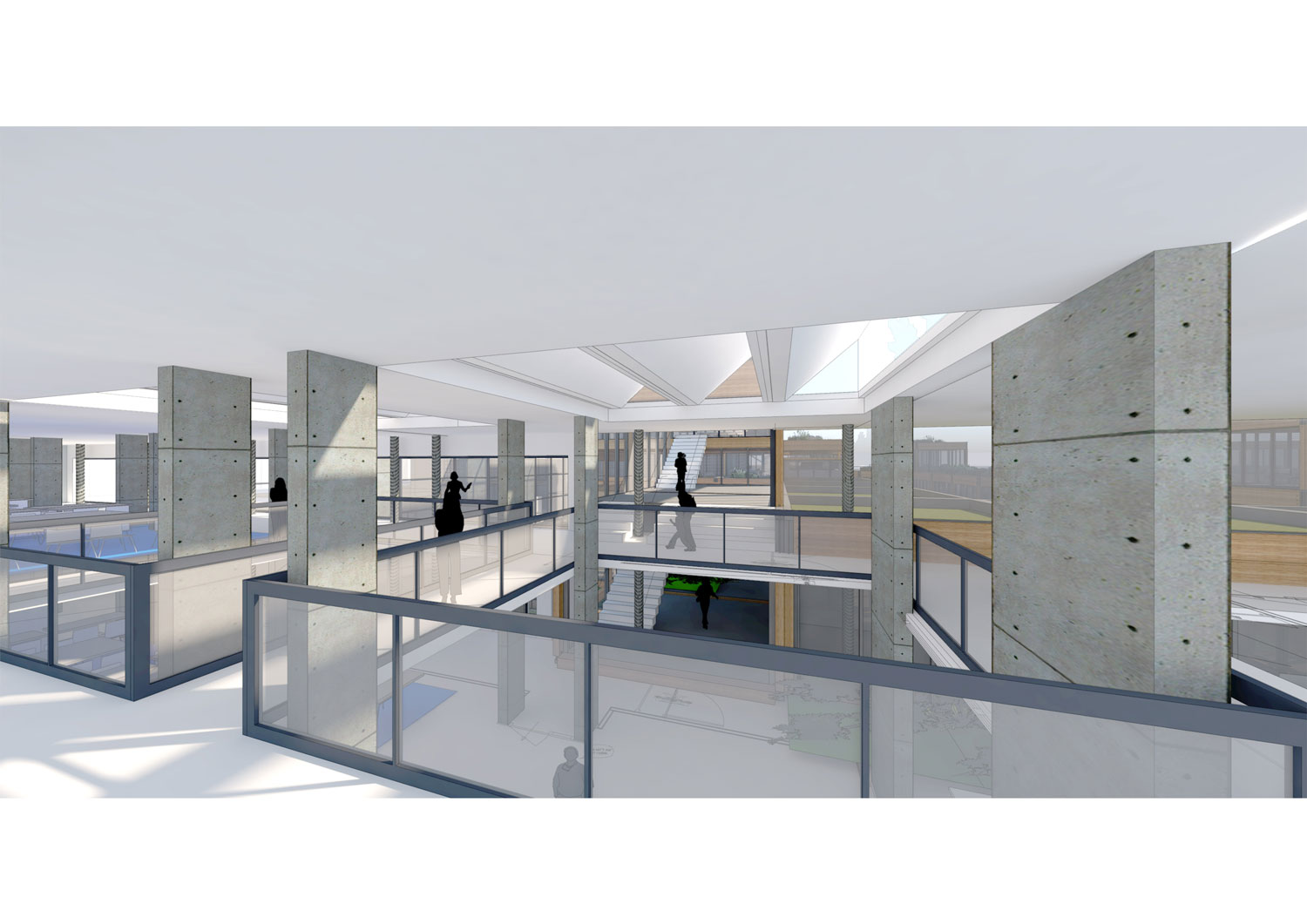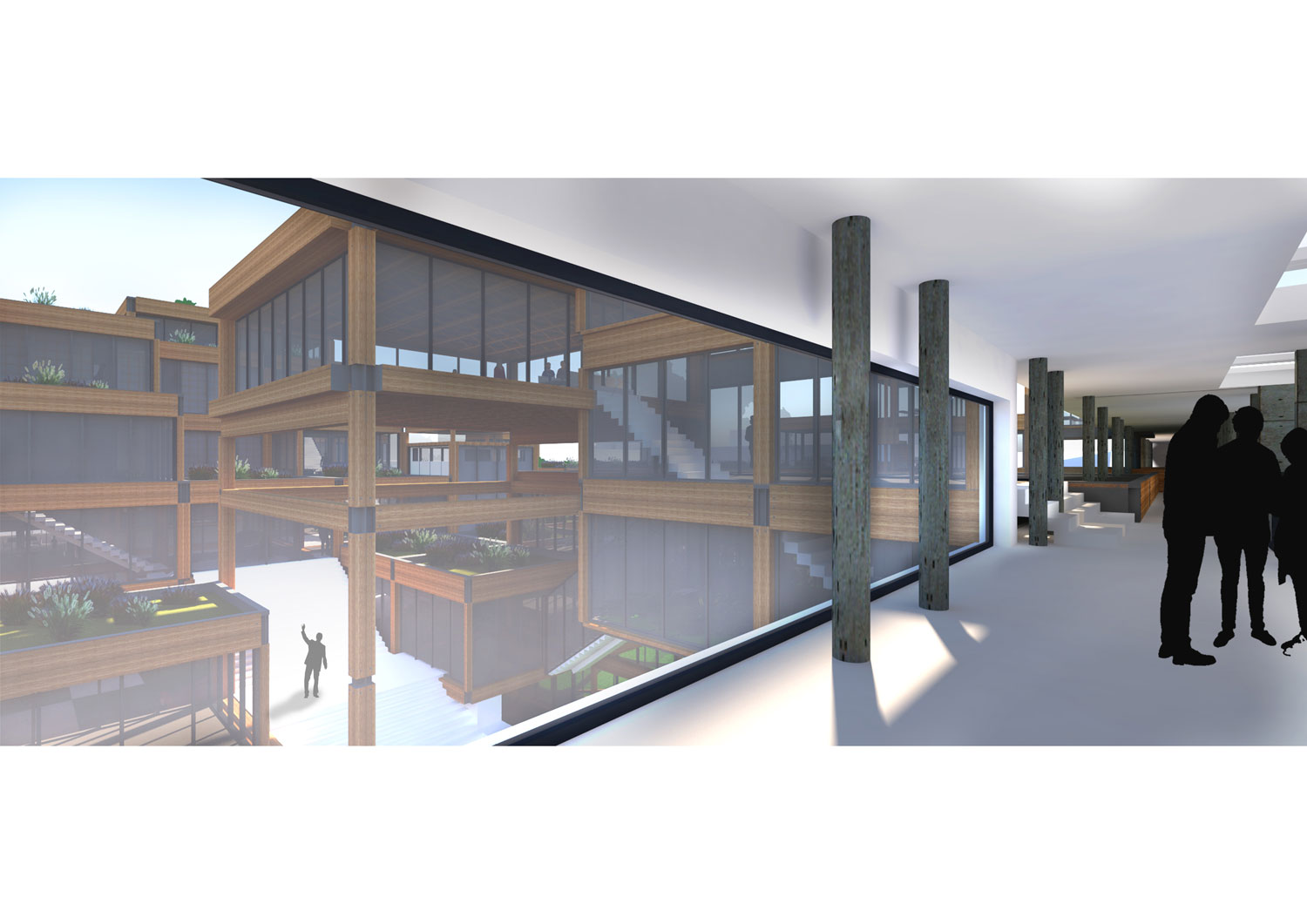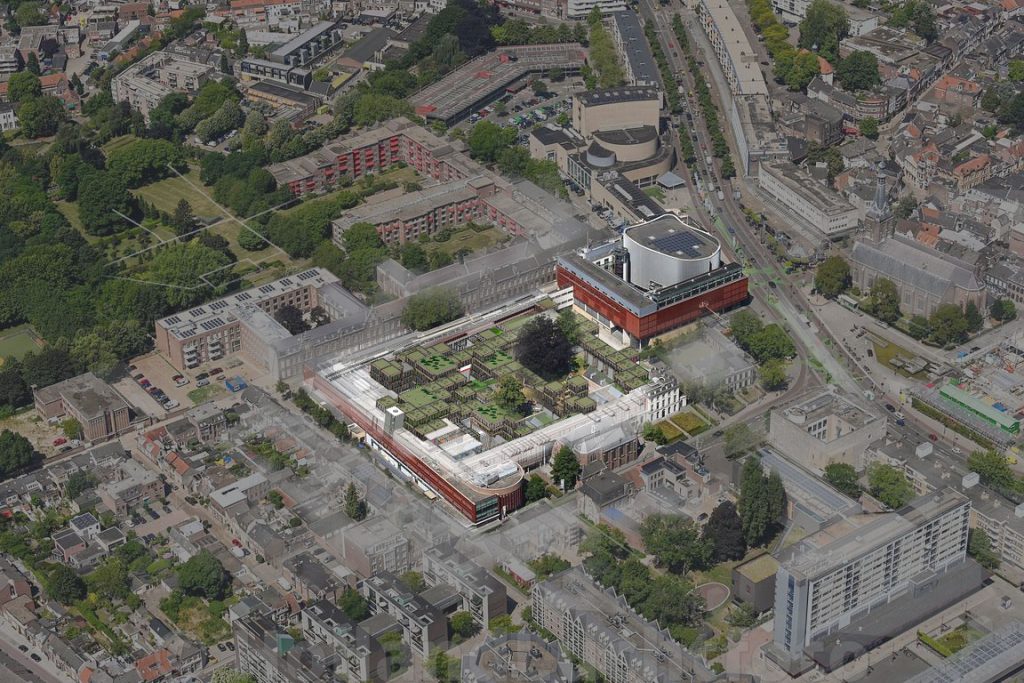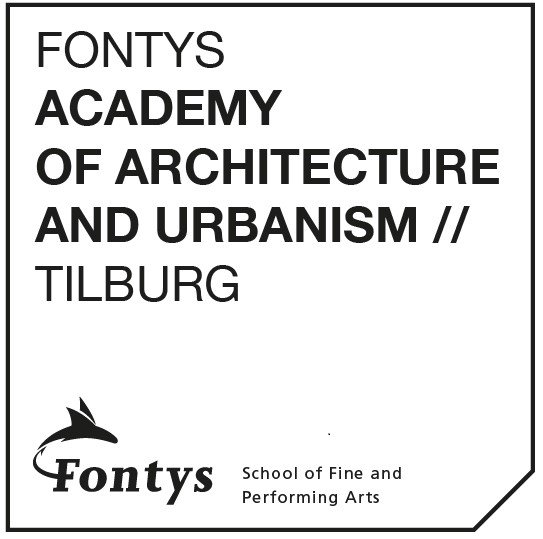From art cluster to living art
The existing spaces of the FHK building in Tilburg have trapped within the boundaries of the one architectural component which is called” The corridor”. Spaces and rooms are connected in a strict hierarchy and there is less room for student/ artist `s interactions. Some of the other problems with the building are 1- difficult to find the position of the academies in the building( Navigation problem).2- There is no center to the school, (detached Garden) 3-the building needs a better connection with Tilburg and the people of the city. (separation from Tilburg). 4-Students are trapped behind the walls.5- There is no place for Interdisciplinary education 6-Academies need more space
Thus the beginning of the project starts with the hypothesis that “Architecture could help Fontys school of art (FHK) in educating interdisciplinary artists/students by reconnecting the vital stakeholders of the school. “
By knowing all the facts and introducing the system of the 6×6 meter grid, the project begins to fill the leftover spaces of the Muzietuine ( a pocket park trapped in between the buildings of the art cluster) and turn it into an active island of interactions between different stakeholders of the FHK ( Students, teachers, employees, people of the Tilburg)
Besides the existing spaces of the FHK, the projects introduce some new spaces to be added to the buildings. These spaces are commercial spaces, International student housing, coffee areas, interior, and exterior exhibition halls, more open study areas, and different courtyard spaces.
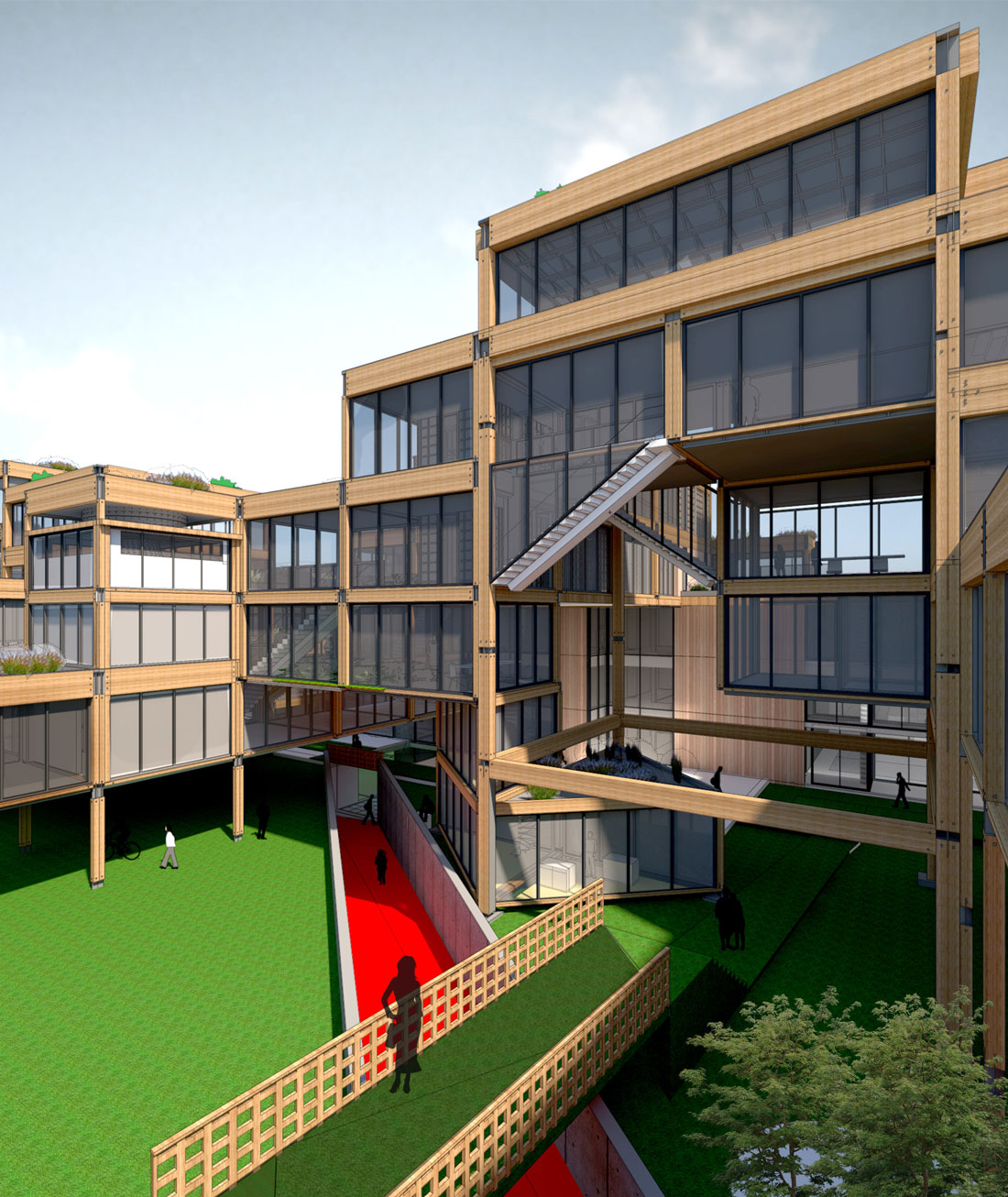
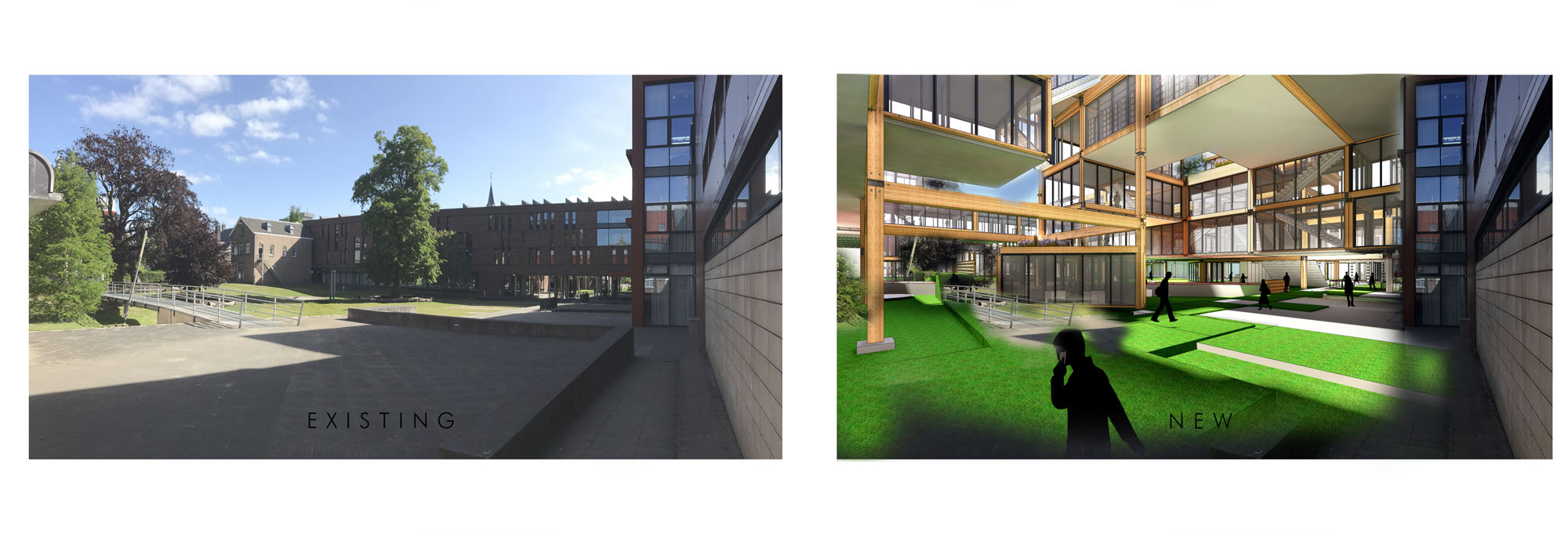
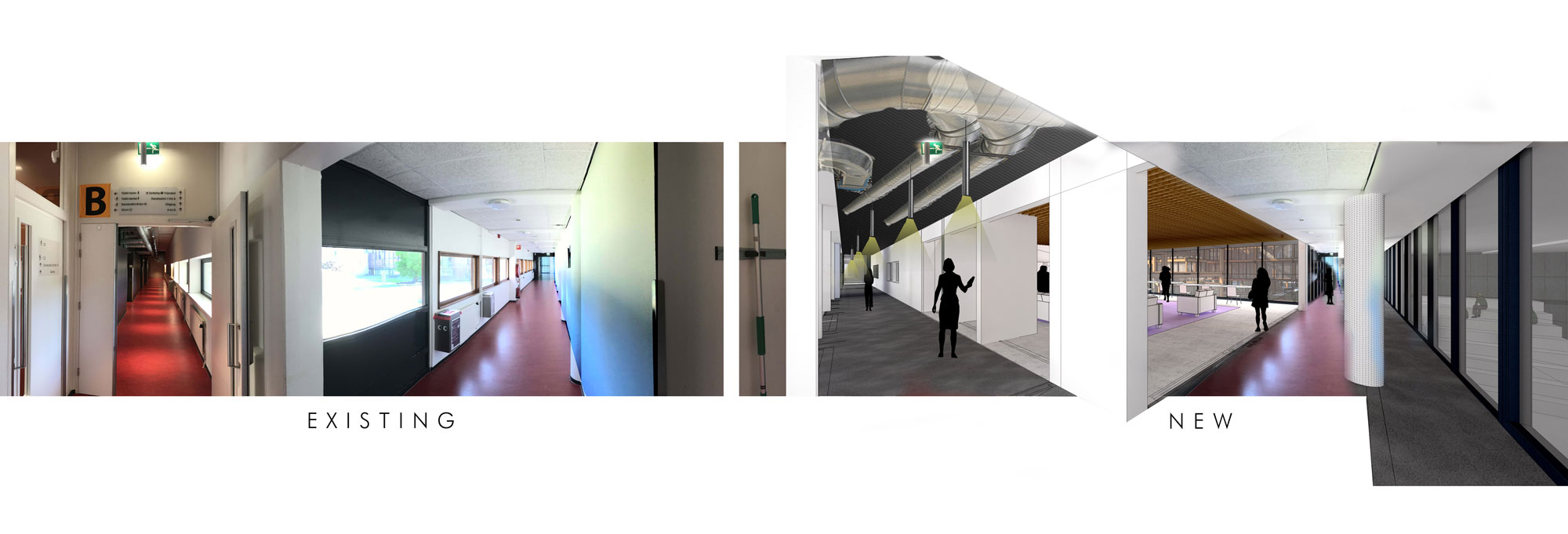
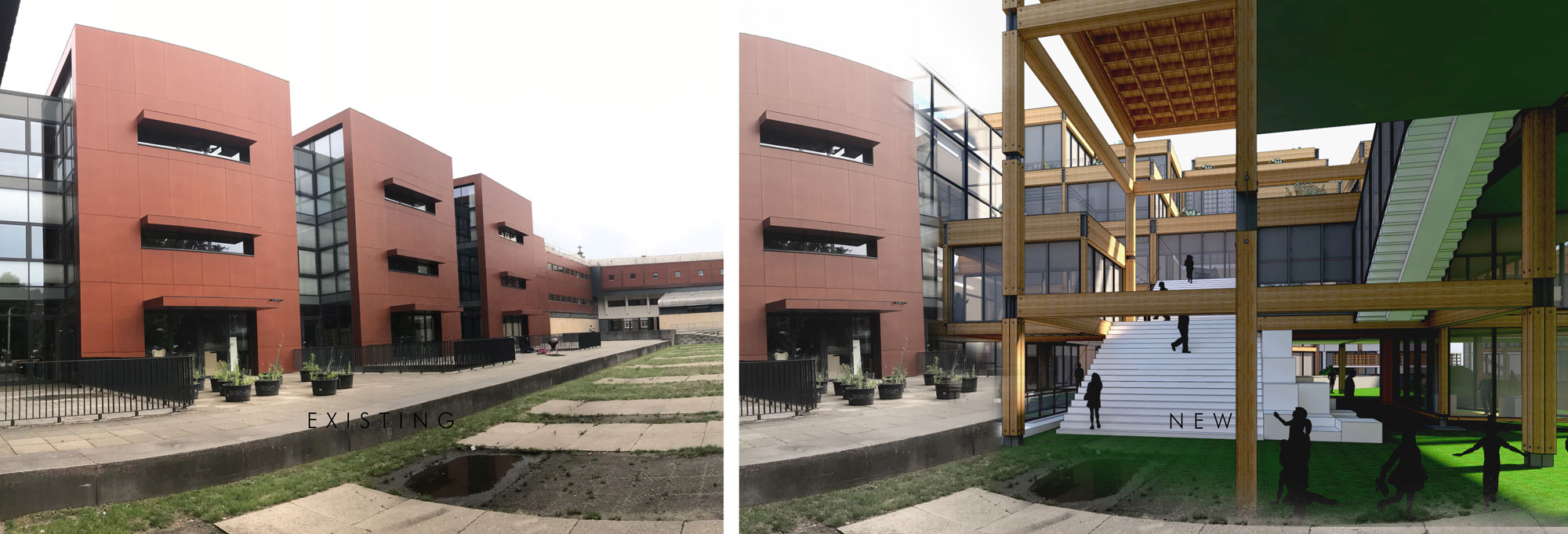
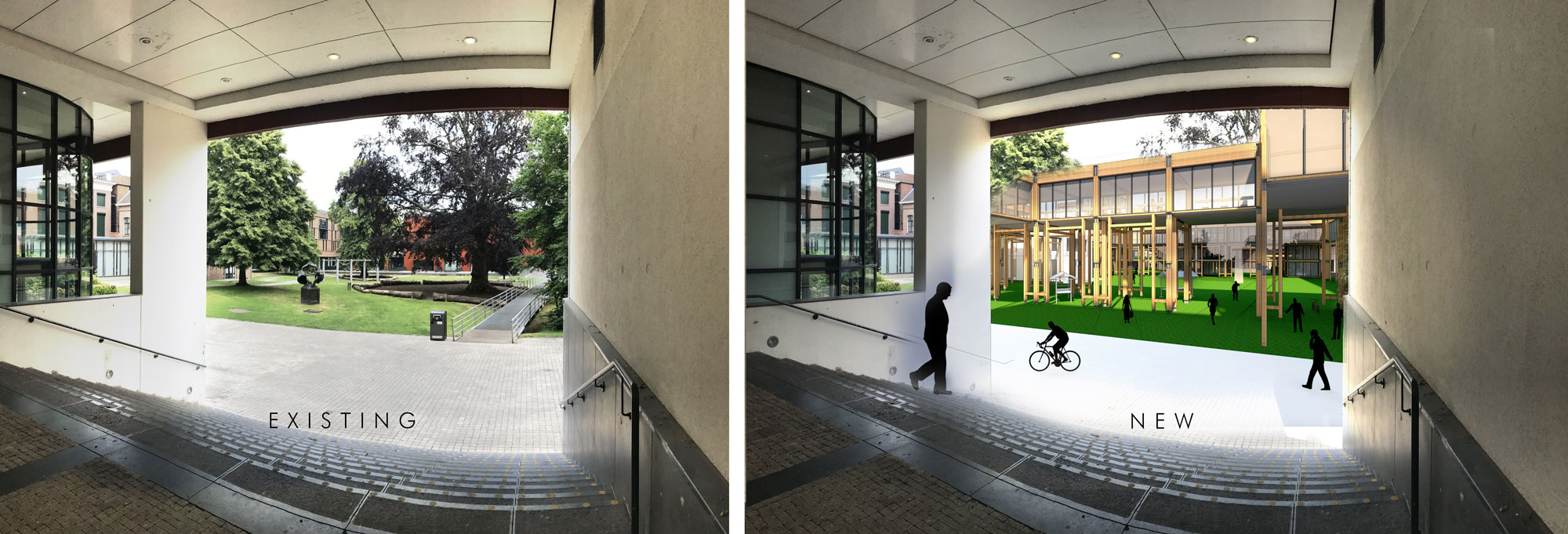
Also, as the result of the project, an “educational manual” has been prepared,
1-Commercial line: Demand different activates in the vicinity of the school.2-Hierarchical spaces: Staff/employer’s rooms must have glass walls. Students need to see what is going on before and after a lecture. 3-Educational living: Demand student housing units near the lecture hall. 4-Coffee points: Demand coffee machine every 30 meters and near each vertical access point. 5-Turning points: Demand open study area in every corner of the building, where ever people change their movement vectors. 6-Learning grounds: Practice rooms should be a part of the access routes.7-Carnival of learning: Exhibitions halls are the place where the people of the city and the people of the school meets. 8-Glass walls: One should see the practice of dance, theater, music students. 9-Garden view: Flower pots, indoor green roofs, or painting of any artwork with a green color palette should be visible from every 12 meters in the access routes. 10-Another brick in the wall: Create an opening into the load-bearing structure for bringing light, while attracting new events, movements, and potentials.11-Light line: Demand natural lighting in the border between rooms. 12-Repetitive views: Demand the same size for the door and windows. 13-Good compliments in the classroom: Theory classes are a boring place for students, arrange them in a way that views and movement vectors can be passed each other. 14-God is in detail: Use delicate architectural detailing where columns meet the beams.15-Communication is the key: Demand Speak areas at the highest level of the building.

